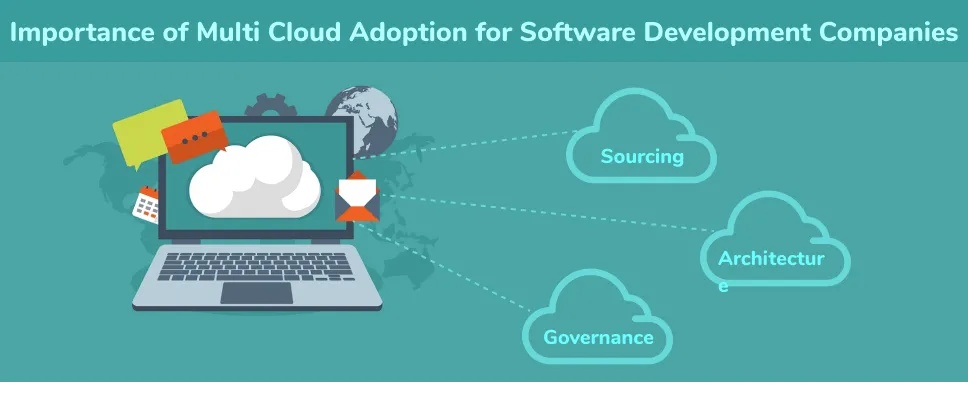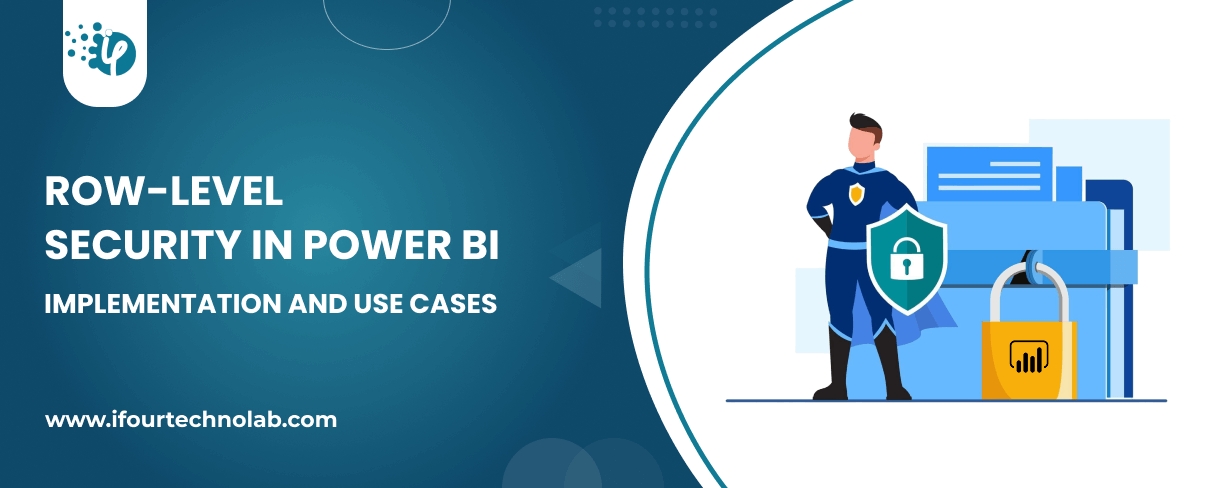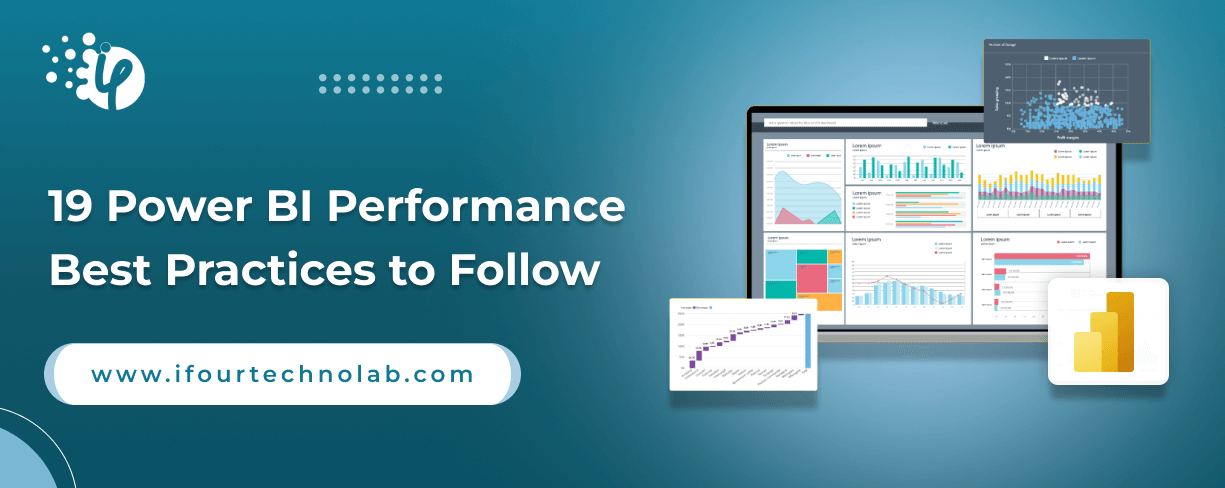Power BI Report Server: Key Features and Elements
Every CTO knows the struggle of managing complex reports. The inefficiency of scattered data, the constant juggling between reporting tools, the challenge of ensuring accurate KPIs...
Kapil Panchal - September 21, 2020
Listening is fun too.
Straighten your back and cherish with coffee - PLAY !

Today, in this tech-savvy era, Multi-cloud architecture adoption is becoming the hype for any enterprise. The main reason is multi-cloud provides cost efficiency with great agility and depending on the requirements you can also separate different workloads into different environments flexibly. Multi-Cloud is nothing but adopting the IAAS services from various cloud providers and reliably sharing the workloads with full of security.
Multi-cloud adoption helps companies to overcome the dependency on a single provider and can avoid the paradox of vendor lock-in. In fact, many business domains have started to adopt multi-cloud solutions with the assistance of well-set Software Development Companies and cloud-based solution providers.
Many experts believe that if Enterprises fail to adopt the modern techniques for their IT solutions & services IT solutions & services within the multi-cloud framework, they will get left behind in this cut-throat competition.
If enterprises accumulate clouds in an ad-hoc manner i.e., only when it is necessary, then it eventually leads to risky fragmentations resulting in high costs. Apart from that burdens of security management, overheads, and difficulty in meeting the business and functional requirements can also occur. That’s why Multi-Cloud Adoption is very crucial and a bold move. Therefore, with the right mix of supporting technologies, strategies, process, and discipline, firms can deal with these kinds of complex challenges while using Multi-cloud architecture.
Multi-cloud Adoption decision can be taken based on three main aspects:
Sourcing, Architecture, and Governance
With the aspect of Sourcing, enterprises can look at the improved agility and minimization of vendor lock-in. This decision can also be taken with perceiving factors like data sovereignty, availability, performance, requirements, etc.
This is a major factor in adopting multi-cloud adoption because today’s modern applications can have the capability to span multiple IAAS providers and can get services from any number of clouds based on the architecture.
Adopting the services from multiple cloud providers, the firms can now ensure several factors like Administrative processes, operational control, monitor the systems efficiently, and more effectively. Business organizations can also systematize on essential aspects such as policies, processes, procedures, shared tools, cost, etc.
Besides that, there were few other benefits in adopting the Multi-cloud strategy like- organizations can have better data recovery, uncomplicated migrations, etc.
Another biggest reason for encouraging Multi-cloud adoption is Low latency factor.
You might be thinking what is latency here. Actually this kind of issue is mostly faced by global organizations that have multiple branches. Nowadays the applications and their crucial data are stored in the cloud. If a user trying to access application data from a far location, he may not get instant results. It might take some time. There is also a possibility to occur some delay as the data traffic has to move through many nodes and reach the user point. This delay is known as Latency. These kinds of delays in data can result in losing valuable customers. Therefore, organizations need to adopt Multi-cloud architecture. With Multi-cloud, the requested data can be handled by the datacenters closest to the user and can easily respond to the end-user without any delays.
For any organization, it is important to map the whole network and determine exactly where the cloud will fit in the premise. Understand the overall strategy of system management and get a clear picture to avoid extra charges.
For any organization having a multi-cloud environment, the cloud services would be provided by multiple service providers. For instance, storage services from AWS, Analytics related services from Microsoft Azure, AI abilities from IBM cloud, etc. Enterprises often pay for these services differently. Hence standardized consumption stands as one of the effective ways to manage a multi-cloud environment.
In multi-cloud, developers need to integrate into six key areas i.e., Organization, Business, Processes, Governance, Information, and tools.
For instance, the Network layer is a significant unit of a multi-cloud where integration is much required to run the enterprise applications in a hybrid computing environment. The company needs to extend network control, visibility, and security environments into multi-clouds appearing like a single network with tremendous functionalities.
Containers deal with a full-pack of application dependencies and lessen the burden of complex resource management. It would hold the components such as libraries, files, environment variables, etc. that are helpful to execute the desired software with hassle-free. This is more helpful when the software is ported to another environment and ensures the correct running of it.
A wide array of benefits you can find with multi-cloud adoption in an organization:
Elimination of lock-in with a specific cloud vendor.
Opportunity to grab the spectacular services from various cloud providers rightly matching your agency needs at reasonable rates.
Cost optimization and excellent performance
You can get the right expertise to achieve complete agility as well as workload mobility between various platforms.
As you could find enormous storage on multi-cloud, it would help the organizations with large volumes of data backup and recovery possibilities, if any critical situation or failure occur.
Being an impeccable solution for data storage, it offers proper automation and syncing facilities regardless of data size.
As the cloud providers are known for their security, all the applications and business data would be safe under the roof of multi-cloud.
Low-latency, high speed, and many more.
Organizations should adopt Multi-cloud architecture for the smooth running of their businesses. You can observe the evolution since the recent past – first, it was started with private clouds, then to overcome the issues of the Private cloud, the enterprises started to follow hybrid cloud making strategies.
It is quite surprising to know that a million bytes of data are generated between the nodes by organizations every day on the web. And to look at the resources such as databases, platforms, devices, network, end-points everything starts to explode with complexities and burdens. To make a solution for that, fundamental architectural planning needs to be done. Hence, this is also one of the reasons why Multi-cloud adoption is a must for every enterprise.
Multi-cloud adoption has become the mainstream component of any custom software development company. Therefore, keeping a prior focus on data security is imperative for businesses. To manage multi-cloud environments, you need to follow effective practices. Initially, you should start with mapping workloads to the cloud platform, and comprehend hybrid cloud concepts. Make sure you streamline the vendor management and drive usability. All and above, create consistent security policies at all service levels.
Multi-cloud adoption simply means utilizing multiple cloud services for businesses to achieve end goals. This could include public, private, or edge cloud categories.
Yes, multi-cloud is safe to use because it simply utilizes 256-bit AES encryption, an advanced and effective encryption technique for seamless data protection.
Adopting a multi-cloud strategy is an imperative move. However, there are a few challenges with multi-cloud adoption such as – interoperability, management complexity, data security, compliance, additional costs, etc.

Every CTO knows the struggle of managing complex reports. The inefficiency of scattered data, the constant juggling between reporting tools, the challenge of ensuring accurate KPIs...

The very first reason why you should implement Row Level Security is to foster trust, a crucial element for any business's success. Next, it reduces data clutter and helps you load...

The performance of Power BI is significantly influenced by two essential factors: design consistency and the rapid loading of BI elements. This holds true whether you choose Tableau...